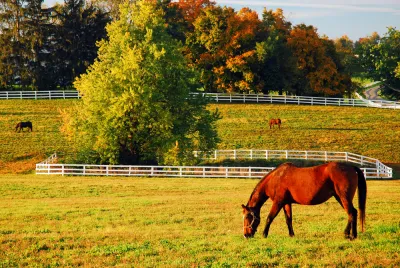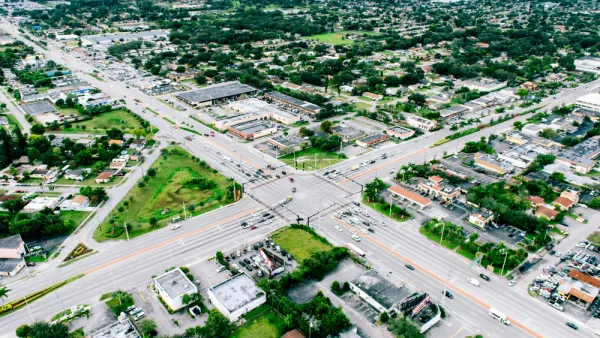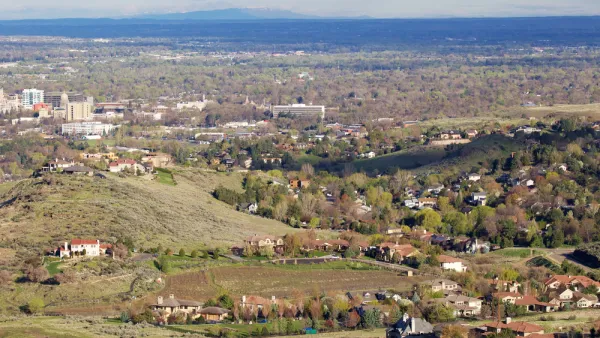Lexington, Kentucky's growth boundary survived a comprehensive plan update in 2019, after years of controversy. A housing crisis, a growing city, and a broken land use system are rearranging the political arithmetic behind the greenbelt.

Nolan Gray reports on the controversy surrounding the future of the oldest growth boundary in the United States, established by Lexington, Kentucky in 1958.
The Lexington greenbelt has stirred controversy throughout the public process of updating the city's comprehensive plan, according to Gray:
Businesspeople and developers argued that a lack of developable land in Lexington is driving businesses away and housing costs up, while defenders of the greenbelt countered that there is still ample land to develop without extending the boundary further.
Gray provides the history of the greenbelt (enacted to protect the horse breading industry from expanding suburban development) and catches up to contemporary times, when Lexington is a city of 350,000 with a diverse economy. "Many of Lexington’s new residents are economic migrants from the Rust Belt and the coal fields of Eastern Kentucky—my parents among them. These new Lexingtonians have little connection to the horse industry," explains Gray.
Meanwhile, the city's planners are still talking about infill and transit oriented development, and generating new mechanisms for delivering on those goals, such as the Placebuilder program, which "aims to ease up on the permitting hurdles facing mixed-use urban infill," according to Gray.
FULL STORY: America’s First Greenbelt May Be in Jeopardy

National Parks Layoffs Will Cause Communities to Lose Billions
Thousands of essential park workers were laid off this week, just before the busy spring break season.

Retro-silient?: America’s First “Eco-burb,” The Woodlands Turns 50
A master-planned community north of Houston offers lessons on green infrastructure and resilient design, but falls short of its founder’s lofty affordability and walkability goals.

Delivering for America Plan Will Downgrade Mail Service in at Least 49.5 Percent of Zip Codes
Republican and Democrat lawmakers criticize the plan for its disproportionate negative impact on rural communities.

Test News Post 1
This is a summary

Test News Headline 46
Test for the image on the front page.

Balancing Bombs and Butterflies: How the National Guard Protects a Rare Species
The National Guard at Fort Indiantown Gap uses GIS technology and land management strategies to balance military training with conservation efforts, ensuring the survival of the rare eastern regal fritillary butterfly.
Urban Design for Planners 1: Software Tools
This six-course series explores essential urban design concepts using open source software and equips planners with the tools they need to participate fully in the urban design process.
Planning for Universal Design
Learn the tools for implementing Universal Design in planning regulations.
EMC Planning Group, Inc.
Planetizen
Planetizen
Mpact (formerly Rail~Volution)
Great Falls Development Authority, Inc.
HUDs Office of Policy Development and Research
NYU Wagner Graduate School of Public Service





























